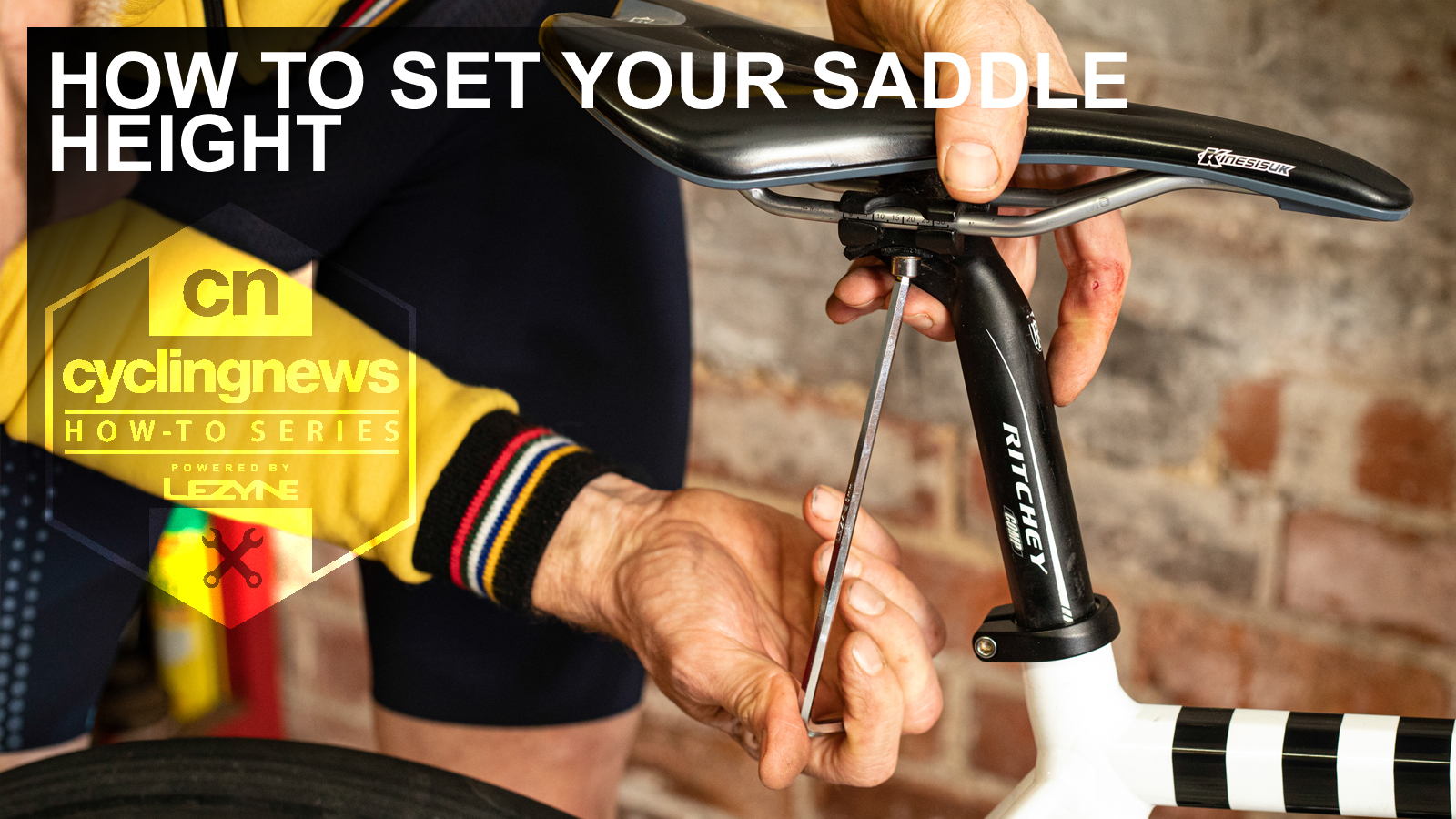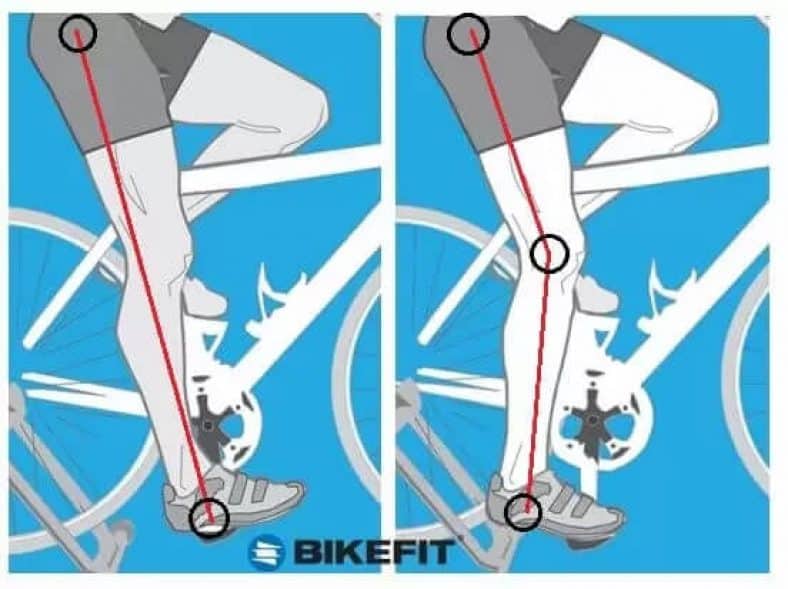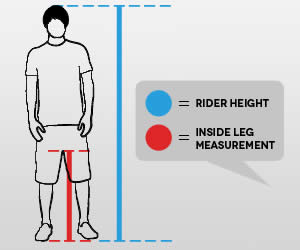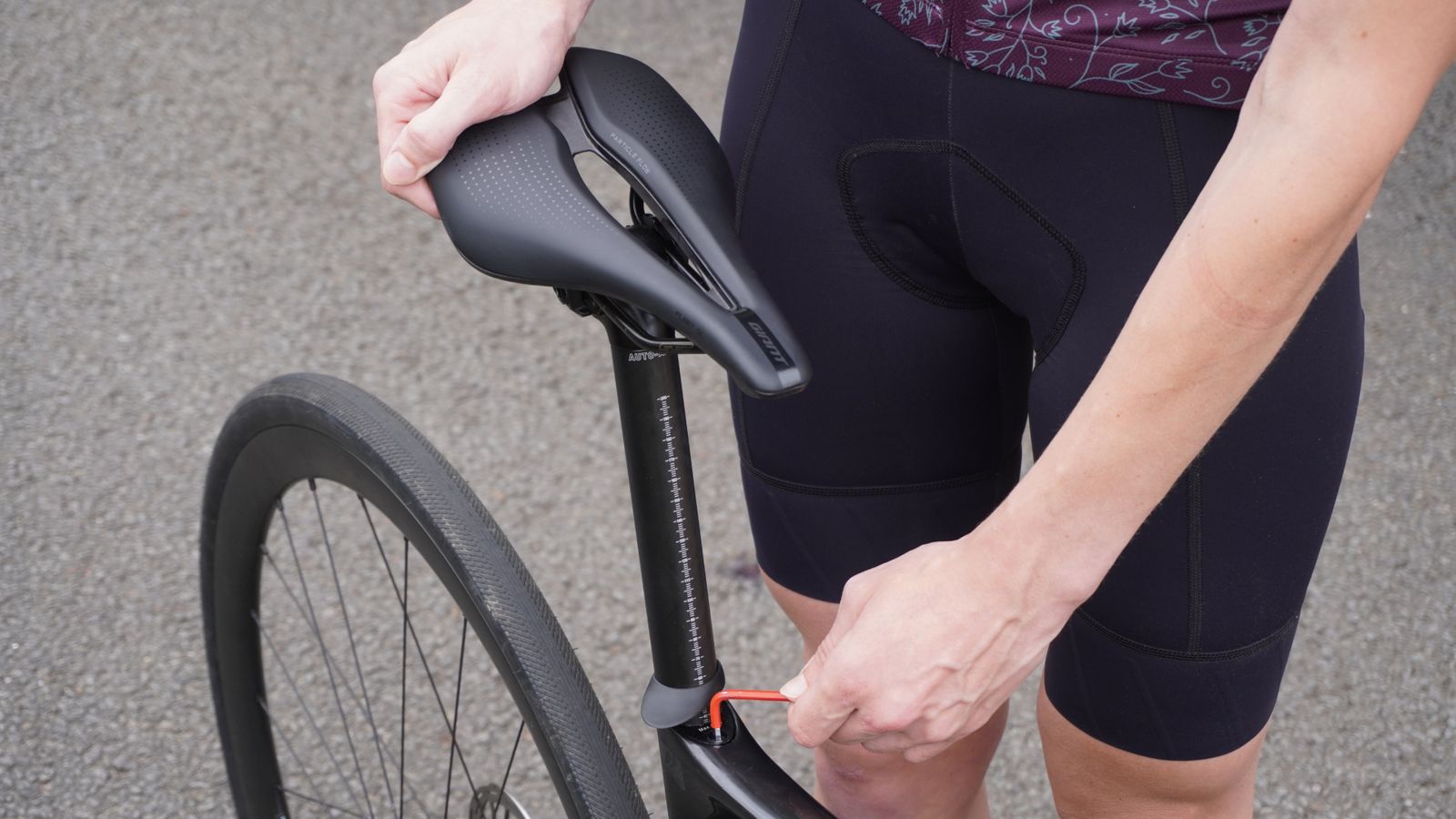Why Proper Bike Seat Height Matters for Comfort and Performance
Proper bike seat height is crucial for a comfortable and efficient ride. When the seat is at the correct height, it allows for optimal leg extension, reducing the risk of discomfort, pain, and long-term damage to the knees, hips, and lower back. A well-fitted bike can improve overall cycling experience, increase performance, and reduce the risk of injury. In fact, a study by the American Council on Exercise found that cyclists who rode with a properly fitted bike experienced a significant reduction in discomfort and pain compared to those who rode with an ill-fitting bike.
One of the primary reasons proper bike seat height is essential is that it allows for efficient energy transfer. When the seat is at the correct height, the legs can extend fully, enabling the rider to generate more power and speed. This, in turn, can improve overall performance and reduce fatigue. Furthermore, a properly fitted bike can help prevent common cycling injuries, such as knee pain and numbness in the hands and feet.
So, how tall should a bike seat be? The ideal seat height is one that allows for a slight bend in the knee when the leg is fully extended. This can be achieved by ensuring the seat is at a height that allows the rider to place the ball of their foot on the pedal with their leg almost fully extended. By following this guideline, cyclists can ensure their bike seat is at the correct height, providing a comfortable and efficient ride.
In addition to comfort and performance, proper bike seat height can also impact the overall cycling experience. A well-fitted bike can enhance the sense of control and stability, allowing riders to feel more confident and secure on the road. This, in turn, can lead to a more enjoyable and rewarding cycling experience.
Ultimately, finding the perfect bike seat height is a matter of experimentation and fine-tuning. By understanding the importance of proper bike seat height and following the guidelines outlined above, cyclists can ensure their bike is fitted to their unique needs, providing a comfortable and efficient ride.
Understanding Your Body Geometry: Measuring Your Inseam and Leg Length
To determine the ideal bike seat height, it’s essential to understand your body geometry, specifically your inseam and leg length. Measuring these dimensions accurately will help you find the perfect seat height, ensuring a comfortable and efficient ride. So, how tall should a bike seat be? The answer lies in your body measurements.
To measure your inseam, stand against a wall with your feet shoulder-width apart. Place a book or a ruler between your legs, with the spine of the book or the edge of the ruler pressed against the wall. Measure the distance from the top of the book or ruler to the floor. This will give you your inseam length. Record this measurement, as it will be used to calculate your ideal bike seat height.
Next, measure your leg length by sitting on a flat surface with your legs straight out in front of you. Measure the distance from the back of your knee to the bottom of your heel. This will give you your leg length. Again, record this measurement, as it will be used in conjunction with your inseam length to determine your ideal bike seat height.
There are several online tools and calculators available that can help you determine your ideal bike seat height based on your inseam and leg length. These tools use complex algorithms to calculate the perfect seat height, taking into account various factors such as your riding style, bike type, and personal preferences. Alternatively, you can consult with a professional bike fitter who can assess your body geometry and provide personalized recommendations for your ideal bike seat height.
When using online tools or consulting with a professional bike fitter, it’s essential to provide accurate measurements to ensure the best possible results. Inaccurate measurements can lead to a poorly fitted bike, resulting in discomfort, pain, and decreased performance. By taking the time to measure your inseam and leg length accurately, you’ll be well on your way to finding the perfect bike seat height and enjoying a comfortable and efficient ride.
The Science Behind Bike Seat Height: How to Calculate Your Ideal Height
Calculating the ideal bike seat height involves understanding the science behind it. There are several methods to determine the perfect seat height, each with its pros and cons. One of the most popular methods is the LeMond method, developed by professional cyclist Greg LeMond. This method involves measuring the distance from the center of the bottom bracket to the top of the saddle, and then multiplying it by 0.883. This calculation provides a good starting point for determining the ideal seat height.
Another method is the heel-to-pedal method, which involves placing the heel of the foot on the pedal and ensuring that the leg is almost fully extended. This method is useful for determining the minimum seat height required for comfortable pedaling. However, it may not provide the most accurate measurement, as it does not take into account the rider’s body geometry and flexibility.
The heel-to-pedal method can be used in conjunction with the LeMond method to provide a more accurate calculation of the ideal seat height. By combining these two methods, riders can determine the perfect seat height for their body geometry and riding style. For example, a rider with a longer inseam may require a higher seat height to ensure comfortable pedaling, while a rider with a shorter inseam may require a lower seat height.
When calculating the ideal seat height, it’s essential to consider the type of bike and riding style. For example, a road bike typically requires a higher seat height than a mountain bike, as the rider is in a more upright position. Additionally, riders who prefer a more aggressive riding position may require a lower seat height to achieve the desired position.
Ultimately, the ideal seat height is a personal preference that requires experimentation and fine-tuning. By understanding the science behind bike seat height and using the methods outlined above, riders can determine the perfect seat height for their body geometry and riding style. So, how tall should a bike seat be? The answer lies in the rider’s unique measurements and preferences.
How to Adjust Your Bike Seat Height for Maximum Comfort and Efficiency
Adjusting the bike seat height is a crucial step in optimizing your bike fit. To ensure maximum comfort and efficiency, follow these step-by-step instructions to adjust your bike seat height:
1. Start by loosening the quick-release mechanism or Allen wrench that holds the seat post in place. This will allow you to adjust the seat height.
2. Next, sit on the bike and place your foot on the pedal. Make sure your leg is almost fully extended, with a slight bend in the knee.
3. Adjust the seat height by moving the seat post up or down. Make small adjustments and test the fit regularly to ensure you’re getting the perfect height.
4. Once you’ve found the ideal seat height, tighten the quick-release mechanism or Allen wrench to secure the seat post in place.
5. Finally, test the fit by riding the bike and making any necessary adjustments to the seat height.
It’s essential to make small adjustments and test the fit regularly to ensure you’re getting the perfect seat height. This will help you avoid discomfort, pain, and decreased performance. Remember, the ideal seat height is a personal preference that requires experimentation and fine-tuning.
When adjusting the bike seat height, it’s also important to consider the type of bike and riding style. For example, a road bike typically requires a higher seat height than a mountain bike, as the rider is in a more upright position. Additionally, riders who prefer a more aggressive riding position may require a lower seat height to achieve the desired position.
By following these steps and considering the type of bike and riding style, you can adjust your bike seat height for maximum comfort and efficiency. So, how tall should a bike seat be? The answer lies in the rider’s unique measurements and preferences.
Common Mistakes to Avoid When Setting Your Bike Seat Height
When setting your bike seat height, there are several common mistakes to avoid. These mistakes can lead to discomfort, pain, and decreased performance, ultimately affecting your overall cycling experience.
One of the most common mistakes is setting the seat height too high. This can cause strain on the knees and hips, leading to discomfort and pain. Additionally, a seat height that is too high can also affect the rider’s balance and stability, making it more difficult to control the bike.

Real-World Examples: How Professional Cyclists Optimize Their Bike Fit
Professional cyclists understand the importance of optimizing their bike fit to achieve success in their respective disciplines. By fine-tuning their bike seat height, they can improve their comfort, efficiency, and performance. Let’s take a look at some real-world examples of professional cyclists who have optimized their bike fit to achieve success.
One notable example is Chris Froome, a professional road cyclist who has won multiple Tour de France titles. Froome is known for his attention to detail when it comes to his bike fit, and he works closely with his team’s bike fitter to ensure that his seat height is optimized for maximum comfort and efficiency.
Another example is Peter Sagan, a professional road cyclist who has won multiple world championships. Sagan is known for his aggressive riding style, and he requires a bike fit that allows him to maintain a low and aerodynamic position on the bike. His bike fitter works closely with him to ensure that his seat height is optimized for this style of riding.
These examples demonstrate the importance of optimizing bike fit for professional cyclists. By fine-tuning their seat height, they can improve their comfort, efficiency, and performance, ultimately leading to success in their respective disciplines. Amateur cyclists can learn from these examples and apply the same principles to their own bike fit to achieve a more comfortable and efficient ride.
So, how tall should a bike seat be? The answer lies in finding the perfect balance between comfort and performance, taking into account the individual’s unique measurements and preferences. By studying the examples of professional cyclists and applying the principles outlined in this article, amateur cyclists can optimize their bike fit and achieve a more enjoyable ride.
Tips for Maintaining Proper Bike Seat Height Over Time
Maintaining proper bike seat height over time is crucial for ensuring a comfortable and efficient ride. As your body position, flexibility, and cycling style change, your bike seat height may need to be adjusted accordingly. Here are some tips for maintaining proper bike seat height over time:
Regular Check-Ups: Regularly check your bike seat height to ensure it remains at the optimal level. This can be done by taking your bike to a professional bike fitter or by using online tools to calculate your ideal seat height.
Adjustments: Make adjustments to your bike seat height as needed. If you notice any discomfort or pain while riding, it may be a sign that your seat height needs to be adjusted.
Maintenance: Regularly maintain your bike to ensure that all components, including the seat post and saddle, are in good working condition. This will help prevent any issues that may affect your bike seat height.
Body Position: Be mindful of changes in your body position, such as a change in your riding style or a gain/loss in weight. These changes may affect your bike seat height and require adjustments to be made.
Flexibility: As your flexibility changes, your bike seat height may need to be adjusted. For example, if you become more flexible, you may be able to ride with a lower seat height.
Cycling Style: Be aware of changes in your cycling style, such as a change in your pedaling technique or a switch to a different type of bike. These changes may affect your bike seat height and require adjustments to be made.
By following these tips, you can maintain proper bike seat height over time and ensure a comfortable and efficient ride. Remember, the ideal bike seat height is a personal preference that requires experimentation and fine-tuning. So, how tall should a bike seat be? The answer lies in finding the perfect balance between comfort and performance, taking into account your unique measurements and preferences.
Conclusion: Finding Your Perfect Bike Seat Height for a Comfortable and Efficient Ride
In conclusion, finding the perfect bike seat height is crucial for a comfortable and efficient ride. By understanding the importance of proper bike seat height, measuring your body geometry, calculating your ideal seat height, adjusting your bike seat height, and maintaining proper bike seat height over time, you can optimize your bike fit and achieve a more enjoyable ride.
Remember, the ideal bike seat height is a personal preference that requires experimentation and fine-tuning. By following the tips and guidelines outlined in this article, you can find your perfect bike seat height and enjoy a more comfortable and efficient ride.
So, how tall should a bike seat be? The answer lies in finding the perfect balance between comfort and performance, taking into account your unique measurements and preferences. By taking the time to optimize your bike fit, you can improve your overall cycling experience and reduce the risk of discomfort, pain, and long-term damage.
In summary, proper bike seat height is essential for comfort, efficiency, and injury prevention. By understanding the science behind bike seat height, measuring your body geometry, and adjusting your bike seat height, you can optimize your bike fit and achieve a more enjoyable ride. Experiment with different seat heights, be mindful of changes in your body position, flexibility, and cycling style, and maintain proper bike seat height over time to ensure a comfortable and efficient ride.








